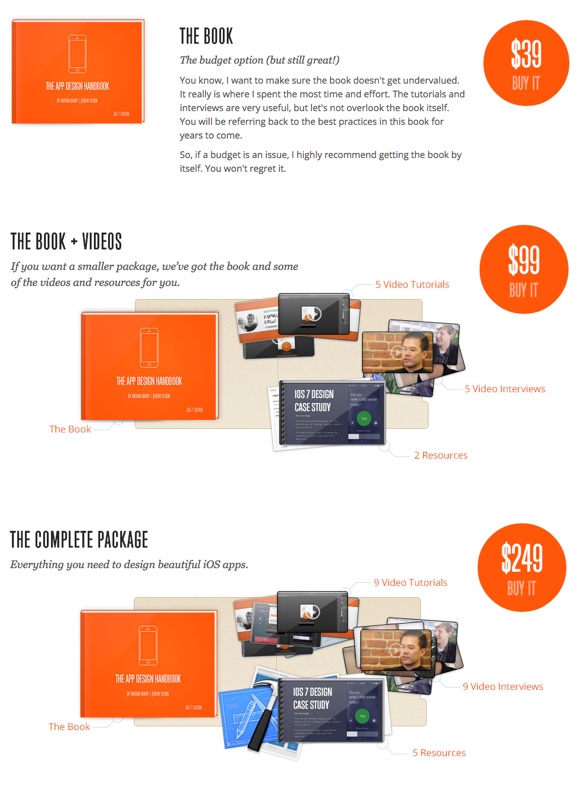Pricing your proposal - With Nathan Barry

Sending out proposals is scary. You imagine all those other more experienced consultants sending out exquisite proposals, written on rolled gold and delivered by carrier pigeon. You know it’s all in your head, but doubt creeps in and you begin to second-guess yourself. All of a sudden the Total that only five minutes ago seemed so reasonable, now seems outrageously expensive. No one will ever pay that!
So you lower your rates. After all, you don’t want to lose out to another consultant do you?
But what if you were only competing against yourself? Would that take the pressure off a little?
Don't lose projects to "Chinese menu" pricing
If you’ve worked in the industry for a while, then you’ve probably seen a traditional invoice. The one chock full of line items and standard pricing. Something similar to the image below:

The problem with pricing like this is that everything becomes a cost. Nobody likes to spend more money than they have to, and when you use the Chinese Menu method (a bit of this, a bit of that) then it becomes too easy for your client to think: “I’ll have a little bit of this, a little bit of that. I’ll cut out this; I can’t afford that…”. Not good!
When you use the Chinese menu method it’s too easy for clients to focus on cost. You’re asking them to pick your pricing apart. There's no perceived value.
I've heard bundling my pricing will win me more projects
Hmmm, perhaps, but it's not quite that simple. To counter the Chinese menu method you can "bundle" everything together as one package. If we take the above example and repackage it into a single bundle then the customer is less likely to start picking it apart and more likely to see some value. See below:

Of course there is a downside to this method as well. By creating one, large package you're actually giving your client an ultimatum. Work with me for $X, or don't. There's no room to manoeuvre. There's no choice. (I would encourage you to talk to their needs though and how you'll improve their business, not list out everything you will do).
A better way to provide value, through tiered pricing
Check out the example below from one of Nathan Barry's product pages.

You'll notice how Nathan Barry bundles all of his "Chinese menu items" into several value packed bundles. Smart.
If you visit the full sales page and read through his copy you'll see that spending more isn't so much seen as an added cost, but as an investment in your education and career. You're not paying an additional $60 to get the video interviews and tutorials. You're investing $60 to shortcut your learning curve, and make more money sooner by learning from the best in the field.
The value is evident, making the cost secondary. And what’s more, if you can’t afford the “complete” package (which you didn't know you needed) you can opt for one that falls more in line with your budget. You’re already sold; it’s just a case of choosing an option. A lovely win/win.
Now, I know that some people don’t feel comfortable offering up-sells. And looking at the way some businesses do it (mentioning no names; Godaddy) I’m not surprised. It can feel a bit scammy. However, sometimes your client just doesn’t realize that by adding a certain element to "Package B" they can 10X the value brought to their project. This is why it’s important to get as much face time as possible with your clients before writing a proposal. You can anticipate their business needs and look for ways to offer added value.
As a quick exercise check out a few SaaS pricing pages. What do you see? The higher the price, the more value they provide. And there are options!

When you anchor one "bundle" or tier against another, you significantly increase your chances of making a sale. If you don’t use price anchoring or tiers in your proposals, then you could be leaving a lot of money on the table. You could also be underserving your clients. Try offering more value at a higher price point. You could be pleasantly surprised.
Good luck
